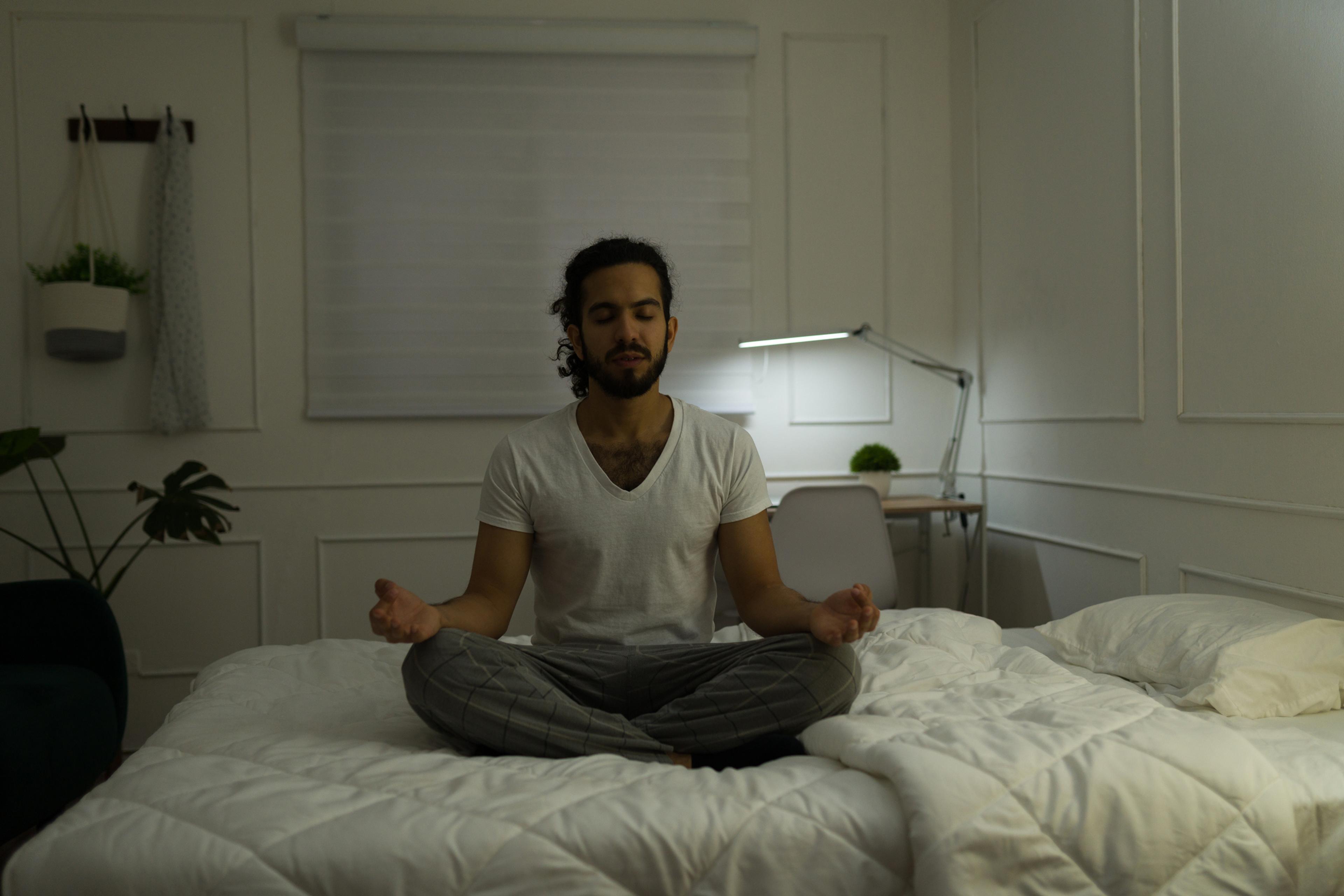Sleep Series: What is Sleep Meditation?
Jake Newby
| 4 min read

Key Takeaways
- Sleep meditation is a mindfulness practice designed to prepare your body and mind for a restful night’s sleep.
- Body scanning, breathwork and counting breath exercises are examples of sleep meditation techniques.
- Meditation can create calmed stress pathways by helping to slow breathing and lower heart rate and blood pressure, all of which can calm the body before bed.
Working, exercising and trying to be generally productive after a bad night’s sleep can be a slog. If you are one of the 50 to 70 million Americans with chronic or ongoing sleep disorders, you’ve surely tried to mitigate the issue. But have you given sleep meditation a chance?
Sleep meditation is a mindfulness practice designed to prepare your body and mind for a restful night’s sleep. The general goal of meditation is to promote a relaxed response to our stressful thoughts and feelings. Many of us tend to let those stressors and unwanted thoughts circulate as the day winds down, or as we actively try to fall asleep.
If you struggle to fall or stay asleep, practicing a sleep meditation routine can be an alternative option to sleep aids or sleep medications you may have tried.
Benefits of meditation for anxiety and sleep
A JAMA Internal Medicine study found participants who practiced mindful meditation over a six-week span experienced less insomnia, fatigue and depression after compared to study participants who did not.
According to the Sleep Foundation, meditation can create calmed stress pathways by helping to slow breathing and lower heart rate and blood pressure. Additionally, since anxiety disorders are closely associated with sleep deprivation, sleep meditation can be useful for individuals whose anxiety is preventing them from a good night’s sleep.
Research has found meditation to be a helpful, evidence-based treatment method for anxiety disorders. One recent study found meditation to improve emotion regulation, allowing individuals to become less reactive to thoughts and sensations.
Pain, sometimes stemming from chronic conditions, is another common sleep disruptor. Some studies have found no connection between meditation and pain relief, while others have also found meditation to significantly reduce pain in experimental and clinical settings. At worst, it’s worth trying to help make pain more manageable, especially as you climb into bed for the night.
Sleep meditation concepts and techniques
There’s no right or wrong way to meditate and the same goes for sleep meditation. There are plenty of resources online to turn to for guided sleep meditation, as well as standard meditation practices you can apply for bed. Some of those, according to the Sleep Foundation, include:
- Body scanning
- Breathwork
- Counting breath exercises
- Progressive muscle relaxation
- Visualization
Most meditation practices incorporate concepts like concentration, deep breathing, finding a comfortable position and a quiet environment.
What is a good sleep meditation?
Here is a step-by-step example of a sleep meditation routine to try:
- Turn off the lights and close the blinds or curtains in your bedroom. Silence cell phone notifications and shut off all other devices, unless you are using one for guided meditation.
- Get into a comfortable meditating position, whether it be sitting up or lying down.
- Close your eyes, clear your mind and focus on your breath. If you’d like, place one hand on your stomach and one on your chest and you inhale and exhale.
- Take slow, deep breaths in through your nose and out of your mouth. Be conscious to use your diaphragm and not your chest muscles. Sigh audibly during each exhale.
- Incorporate body scanning by taking stock of how each part of your body feels. As you breathe in and out, consciously release any tension you feel from your neck, shoulders, chest and midsection down through your legs and feet.
- Repeat 10 to 20 calm, controlled breaths in which you are present in the moment. You can try repeating a calming phrases or mantras to yourself, such as “I am calm” or “I am at peace.”
Some people may find it beneficial to get under the covers after completing their meditation routine. You can experiment by trying to go to sleep a half hour, 15 minutes or immediately after meditating to find what works best for you.
Consider sleep meditation a form of sleep hygiene. If you’re not already, try forming these other habits throughout the day to improve your quality of sleep at night:
- Avoiding alcohol and caffeine several hours before bed.
- Avoiding screen time one to two hours before bed.
- Exercising during the day to regulate energy levels.
- Setting a sleep schedule in which you go to bed and waking up at the same time each night, even on weekends.
- Create a dark, cool sleeping environment in which your blinds and curtains are shot, the temperature is between 60- and 67-degrees Fahrenheit and your bedroom is free of unwanted noise. You can also try wearing a sleep mask and/or ear plugs.
Blue Cross Blue Shield of Michigan offers regular online meditation webinars available through Blue Cross Virtual Well-Being℠. Click here to view a list of upcoming meditations that are open for registration.
Photo credit: Getty Images
More from the MI Blue Daily Sleep Series:





